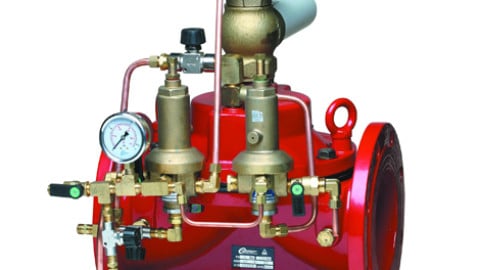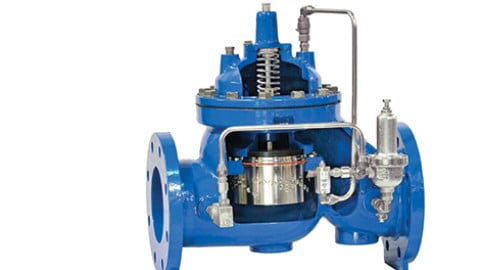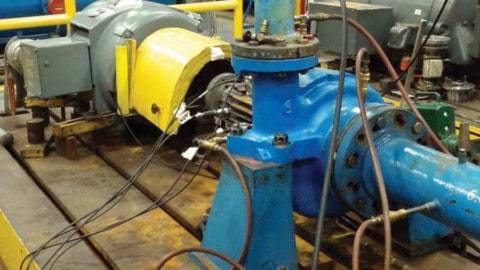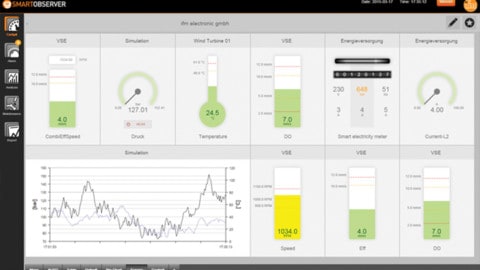By Keith Sanders
In previous articles in this series on successful pump project management, Keith Sanders looked at pump system design and equipment selection, and energy audits – the first and second pillars that are needed to aid the success of upcoming projects and contribute to better outcomes for other important objectives such as climate change, water resources and energy conservation. In this article, he takes an in depth look at the third and final pillar: performance testing of pumps.
For projects where pump performance is considered critical, then engineered pumps need to be considered, which allow the engineering requirements to be tightened and hydraulic performance criteria specified to a greater level of accuracy.
While modern design tools allow pump engineers to improve the hydraulic design of impellers or rotating elements and casings etc., the final performance of a pump is determined by physical testing.
A typical ITP will include several verification points during manufacture, and these include:
• Drawing approval. GA drawings, assembly drawings and detailed bills of material
• Material testing, traceability and certification
• Witness points for key procedures in the manufacturing process
• Pre-delivery inspection
• Performance testing
So that performance of similar products can be compared, it is usual for pump tests to be performed to a prescribed standard and this is either done at a manufacturer’s works or at a qualified test laboratory with facilities that comply with the requirement of that standard.
Tests are usually performed using water as the pumped medium, particularly for centrifugal pumps, in a closed loop system with suitable instrumentation to take the necessary measurements. Suitably qualified personnel should conduct the tests to ensure the designated procedures are followed and appropriate records are kept.
Performance testing for rotodynamic pumps
Standards Australia has approved a direct adoption of ISO 9906 -2012 as the procedure for testing roto-dynamic pumps. AS/ISO 9906-2018 is currently used in Australia and as a result, the earlier code AS 2417 -2001 was discontinued and became obsolete.
The major change between these two standards involved a change in the Grades for Testing (from 2 to 3) and the tolerances applicable (from 3 to 6). The new Grades and appropriate tolerance levels on flow, head, power and efficiency are shown below.
Pump test acceptance grades and corresponding tolerances
Grades 1U, 2U are new, as is Grade 1E, while Grade 1B, 2B are retained. Grade 3B is equivalent to AS 2417 Annex A tolerances. Grades 1U, 2U, do not allow for negative tolerances on flow, head or power.
1U and 1E do not allow any negative tolerance on efficiency. It should be remembered that the user can require performance guarantees from the supplier for flow (Q) and head (H) at a particular duty, but power (P) and efficiency (ŋ) are optional and need to be agreed in advance.
It is up to the pump user to decide which grade and tolerance level should be employed for a performance test to suit their purpose and agree this with their pump supplier.
In case this is not previously agreed, the standard includes a default level for typical applications/industries where pump performance testing may be common.
It should also be noted that the current test code has been harmonised with the US Code ANSI/HI 14.6, which means that the test procedures in all the major pump producing regions are the same.
Performance testing for rotary PD pumps
There is no Australian Standard for testing rotary positive displacement pumps and most of such products are imported from the US, Europe, Japan or China.

Note: Tx (where x = Q, H, P, ) stands for the tolerance of the indicated quantity.
As a result, the use of either US or European Standards is recommended and these are available by contacting the relevant standards bodies.
• US – ANSI/HI 3.6 – Rotary Pump Tests
• Europe – BS/EN 14343 – Rotary positive displacement pumps. Performance tests for acceptance.
Performance testing for reciprocating PD pumps
Again, there is no Australian Standard for testing reciprocating positive displacement pumps. There is an American Standard ANSI/HI 6.6 – Reciprocating Pump Tests, which can be used when a performance test is required.

Installation, commissioning and site testing
The importance of this part of the project management cycle cannot be underestimated. Many people assume that the installation of pumping equipment can be done by a collection of qualified tradies who simply follow the installation procedures issued by the respective equipment suppliers.
However, experience has shown that a professional Installation & Commissioning Supervisor can play a vital role in the successful completion of the plant installation program.
In earlier times, when Australian pump manufacturers were involved in major project work, they supplied members of their own staff for this critical phase of the program. Such expertise is not so readily available these days, particularly as many companies have been obliged to cut back on staffing levels due to the Coronavirus pandemic.
However, Pump Industry Australia has been conducting a regular Installation & Commissioning Training Program and has a register of qualified personnel who can conduct such work. Again, there are some key points that need to be observed in the positioning, levelling, alignment and pre-startup of the equipment to avoid unnecessary damage by third parties also working in the same pump room.
Pipe fitters and sparkies have been known to undertake their own work without due care and attention to pumping equipment. As a result, coupling alignment is disturbed or pumps are run dry and seal damage occurs in a very short space of time.
Site testing also needs to be conducted in the presence of a pump expert, since the way in which instrumentation is installed can have a significant impact on the accuracy of measurements that are recorded. A team approach is required to ensure that all necessary OH&S procedures are observed.
Summary
By following a well-designed ITP, a Project Manager can keep control of the progress of key pieces of equipment as it passes through the manufacturing program. Generally, close monitoring of the information provided by the supplier at various stages needs to be promptly reviewed and accepted as soon as possible to avoid delays.
Hydraulic performance testing is an important part of the overall ITP to determine that the pump meets its quality and performance expectations. Often, pumps are subject to a String Test, where several other measurements can be taken, such as noise level tests, vibration tests, lubrication analysis, etc.
In an overall context it should be understood that the Works Test is the basis on which acceptance of pump performance is established. While a site test may be desirable, this is more valuable in determining the integrity of the whole plant in real time under actual operating conditions.
Site tests should also be undertaken by suitably qualified personnel and the results recorded. Judgements about perceived defects in plant performance need to be made and any corrective action considered in conjunction with the pump supplier.





















